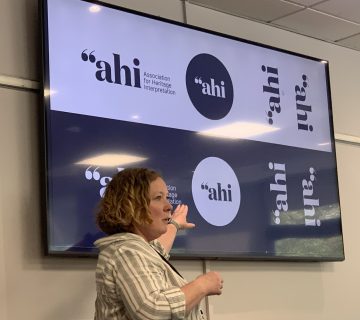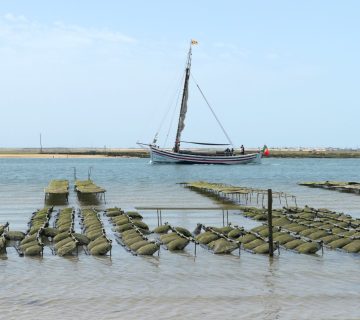Since our last newsletter, there’s been a flurry of activity in the training team. Our trainers were there to assist the learning process, help participants progress and make each course a memorable experience for everyone.
In the last three months, CIG courses have been held from Greece all the way to Norway, providing hugely valuable feedback from a broad range of participants following the same curriculum in widely differing environments. All IE trainers have standout moments from their courses and we asked them to share some with us.
Kristian, from Norway, says, ‘What I found most memorable was the progression and steep learning curve of the participants. While they all struggled at first, they eventually made full use of the HI tools.’
Sometimes, memories can be funny, like when one of the participants on Janja’s course in Slovenia arrived on the last day dressed as Santa, bringing a foretaste of Christmas spirit!
Our trainers can also be struck by how heritage interpretation can help people enhance their own professional skills. This was Helena’s case, also in Slovenia, where one of her course participants, a teacher, became a true believer in the value of HI. Helena remembers, ‘She was initially reluctant to interpret paintings without knowing much about them, stating: ‘I have to teach children the facts, otherwise I fail as a teacher!’ On the last day she prepared a brilliant talk: she asked us to ‘read’ the paintings using our imagination, searching for values. She became very keen on HI tools and realised how much more children would appreciate art if they were encouraged to discover aspects of heritage that relate to themselves.’ She concluded, ‘Even if all a teacher manages to do is awaken a spark of interest in art lessons, that is quite immense.’
Thorsten adds, ‘I most value the moment when experienced guides say, ‘The interpretive approach opened a new door to me’.’
Of course, an IE trainer never sits on their laurels. They are constantly thinking of ways to improve the training experience. Like Janja, who invited a blind friend to take part in one of the exercises. This led to a discussion about how interpretive guides can help everyone gain access to our heritage.
Michal, in the Czech Republic, split his course into three two-day sessions. He found this worked because, ‘We could test what participants remembered from each session, while interpretive talk training activities were not perceived as over-repeated and participants could prepare their homework and read the course manual. They also had time to prepare and discuss their projects too.’
Of course, not everything in an IE course is rosy or simple! As Janja says, ‘The CIG is a challenging and emotional course. Participants expect so much of themselves and are really disappointed when they don’t meet their own standards.’ This is why, as Kristian explains, a trainer has ‘to be fully alert and ready for some pep talks during the course’.
But is it worth it? Well, yes! In Helena’s words, as she concludes her story about the art teacher: ‘I got this warm feeling of fulfilling my task. The CIG course will make her a much better teacher and I feel blessed that I could influence that; change people for the better.’
Kristian Bjørnstad, Thorsten Ludwig, Michal Medek, Janja Sivec and Helena Vičič are all certified IE Interpretive Guide Trainers. Michal and Helena ran their first CIG courses, in Czech Republic and Slovenia, respectively, while Kristian and Thorsten co-trained the first CIG course in Scandinavia and Janja ran her third CIG course in Slovenia.
Valya Stergioti works as a freelance interpretive trainer and planner and is Interpret Europe’s Training Coordinator. She can be contacted at: valya.stergioti@interpret-europe.net.
Sandy Colvine is an IE CIW, a CIG trainer and a member of IE’s training team. He is also studying interpretation at the University of the Highlands and Islands in Scotland. He can be contacted at: sandy.colvine84@googlemail.com
To cite this article:
Stergioti, Valya & Colvine, Sandy (2017) ‘The trainers’ views’. In Interpret Europe Newsletter 4-2017, 12.




